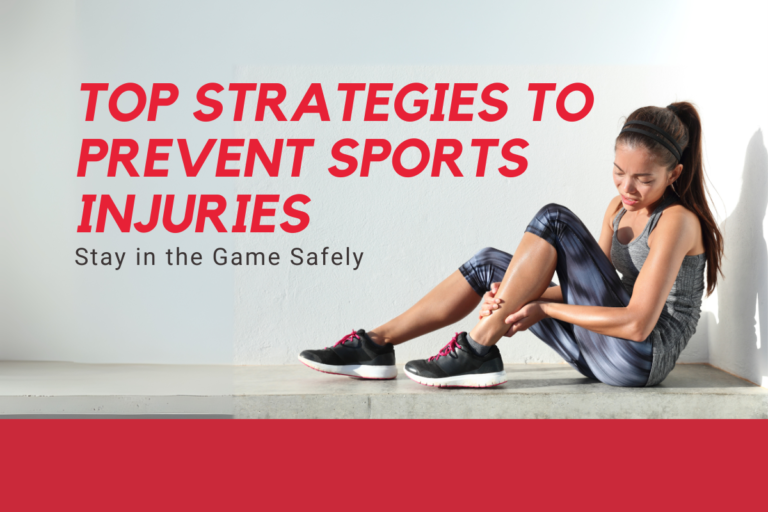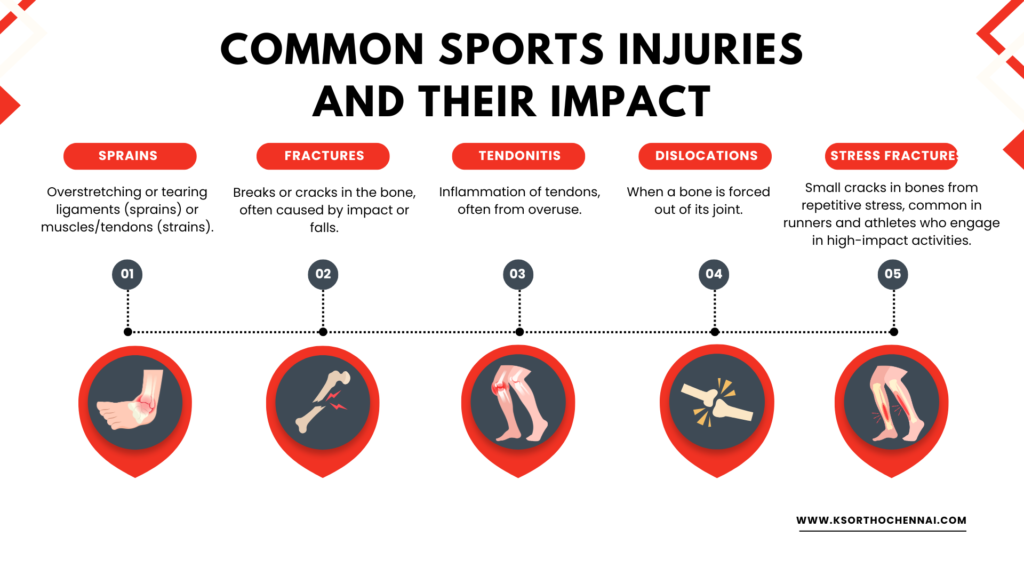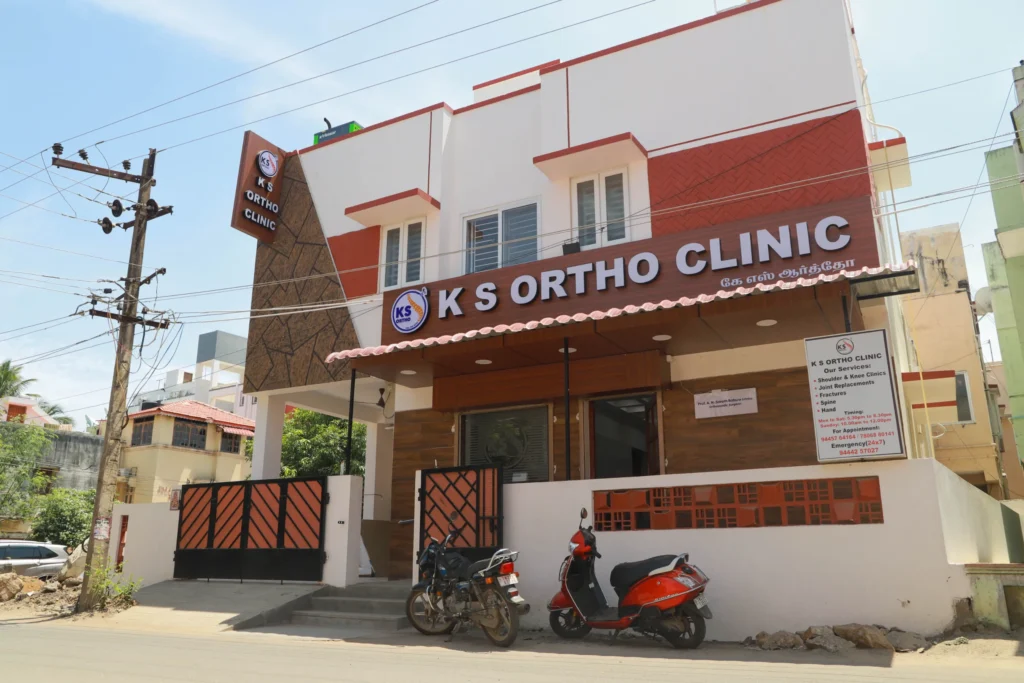Top Strategies to Prevent Sports Injuries: Stay in the Game Safely

The Importance of Injury Prevention in Sports
Whether you’re an athlete pushing your limits during training or someone who enjoys recreational sports, injuries can occur at any time. From sprains and strains to fractures and tears, these injuries can sideline you for days, weeks, or even months, affecting not only your training but also your overall well-being.
The good news is that many sports injuries are preventable with the right strategies. By incorporating proper practices into your routine, you can reduce your risk of injury and ensure that you stay in the game safely. In this blog, we’ll explore the top strategies to prevent sports injuries, including tips for quick recovery and how to choose the right care when an injury does occur.
If you’ve been sidelined by an injury or want to prevent one in the future, read on for expert insights on staying safe during your sports activities. And remember, if you ever need treatment, Dr. Sarath Babu at the best ortho clinic in chennai, Madipakkam is here to help you recover swiftly and return to your game!
Understanding Common Sports Injuries and Their Impact
Before diving into prevention, it’s important to understand the most common types of sports injuries and how they can affect your body.
Common Sports Injuries:
- Sprains & Strains: Overstretching or tearing ligaments (sprains) or muscles/tendons (strains).
- Fractures: Breaks or cracks in the bone, often caused by impact or falls.
- Tendonitis: Inflammation of tendons, often from overuse.
- Dislocations: When a bone is forced out of its joint.
- Stress Fractures: Small cracks in bones from repetitive stress, common in runners and athletes who engage in high-impact activities.
The Long-Term Effects of Untreated Injuries:
Untreated injuries can lead to chronic pain, long-term mobility issues, and a significant reduction in your athletic performance. That’s why it’s important to take immediate action when you experience any form of discomfort or pain.
The good news? Most injuries are preventable with proper care, and if they do occur, a quick visit to an experienced ortho doctor in Madipakkam can ensure proper treatment and faster recovery.

Key Strategies to Prevent Sports Injuries
The foundation of injury prevention is proactive care. Here are some essential strategies to incorporate into your training routine:
Warm-Up and Stretching: A Crucial First Step
Why It Matters:
A proper warm-up prepares your muscles and joints for the physical stress of exercise. A combination of light cardio, like jogging or cycling, followed by dynamic stretches (e.g., leg swings, lunges), increases blood flow, flexibility, and joint mobility.
Tip: Aim to spend 10-15 minutes warming up before every session, even if it’s just a light workout.
Strength Training to Build Muscle and Protect Bones
Why It Matters:
Building muscle strength around your joints and bones provides better support, reducing your risk of injury. Stronger muscles can absorb shocks and impacts, which is crucial for preventing sprains and fractures.
Strength Training Exercises:
- Leg Press for knee and hip joint stability.
- Planks to strengthen your core.
- Lunges and Squats to build strength in your lower body, especially important for running and jumping sports.
Tip: Focus on strength training twice a week, targeting different muscle groups. Always include exercises that strengthen your core, as it supports your entire body.
Proper Technique and Form: Master Your Movement
Why It Matters:
Improper technique often leads to strain and stress on certain body parts, which can result in injuries. Whether you’re running, lifting weights, or playing sports like basketball or tennis, learning and maintaining proper form is key.
Common Mistakes to Avoid:
- Running: Landing with your feet too far in front of your body.
- Weight Lifting: Rounding your back during deadlifts or squats.
- Basketball: Jumping and landing without bending your knees, increasing the risk of knee injuries.
Tip: If you’re unsure about your technique, consult with a coach or trainer who can guide you toward the safest form.
Wear the Right Gear: Protection Is Key
Why It Matters:
Wearing the right footwear and protective equipment minimizes the risk of injuries, especially in high-impact or contact sports.
Essential Gear Tips:
- Choose shoes that provide the right support for your activity (e.g., running shoes for running, cleats for soccer).
- Consider braces or supports if you have a history of joint instability, especially in the knees, ankles, or wrists.
Tip: Always inspect your gear for wear and tear. Replace worn-out shoes, braces, or padding before they fail during activity.
Take Regular Rest and Recovery Days
Why It Matters:
Your muscles and bones need time to recover and rebuild after a training session. Overtraining can lead to burnout and injuries due to fatigue and decreased focus.
Tip: Incorporate at least one full rest day into your weekly training schedule. Active recovery, like walking or swimming, can also help keep blood circulating and aid in muscle recovery.
When Injuries Happen: Quick Recovery Tips
Despite our best efforts, injuries can still occur. The key is to respond quickly and correctly to minimize the damage.
Early Intervention and Diagnosis
Why It Matters:
The sooner you see a professional, the quicker you can start treatment and avoid worsening the injury. Delayed care can lead to chronic pain or complications that take much longer to heal.
Tip: If you experience pain that doesn’t subside within 24-48 hours, visit a top-rated ortho clinic in Madipakkam for an accurate diagnosis.
The R.I.C.E. Method (Rest, Ice, Compression, Elevation)
What It Is:
The R.I.C.E. method is a simple and effective way to treat acute injuries in the first 48 hours.
- Rest: Avoid putting weight on the injured area.
- Ice: Apply ice for 15-20 minutes every 1-2 hours to reduce swelling.
- Compression: Use a bandage to compress the area, reducing swelling.
- Elevation: Keep the injured area elevated to reduce swelling and increase circulation.
Physical Therapy for Rehabilitation
Why It Matters:
Physical therapy can speed up recovery and reduce the chances of reinjury. It involves targeted exercises designed to restore strength, flexibility, and mobility to the injured area.
Tip: After seeing a specialist, ask for a physical therapy referral to ensure a structured recovery plan.
Finding the Right Care: Why Consult an Orthopedic Specialist?
Consulting an experienced orthopedic specialist can be the key to proper treatment and faster recovery. Here’s why:
Why You Need an Orthopedic Specialist:
- Accurate Diagnosis: Specialists can pinpoint the exact nature of your injury, whether it’s a sprain, strain, fracture, or something else.
- Comprehensive Treatment: From medications to physical therapy, they can provide the most effective treatment plan tailored to your needs.
- Prevent Future Injuries: An orthopedic expert can help you adjust your training regimen to prevent similar injuries in the future.
If you’re looking for reliable care, Dr. Sarath Babu at the best ortho clinic in Madipakkam can provide the expertise you need. Conveniently located in Madipakkam, our clinic offers advanced diagnostic tools and a compassionate team to get you back to your best self.
Prevent Future Injuries: Long-Term Bone Health Strategies
Staying injury-free requires attention to long-term health, especially bone and joint health.
Bone Health and Nutrition
Why It Matters:
Strong bones are less prone to fractures. Proper nutrition, including calcium, vitamin D, and magnesium, is essential for maintaining healthy bones.
Bone-Boosting Foods:
- Dairy products (milk, yogurt, cheese)
- Leafy green vegetables (kale, spinach)
- Fortified cereals and fish (salmon, sardines)
Regular Check-Ups: Stay Ahead of the Game
Why It Matters:
Even if you’re not injured, regular check-ups can help spot early signs of wear and tear in your bones and joints. Early intervention can save you from serious problems down the road.
Tip: Schedule a consultation with a top ortho doctor near me to ensure that your joints and bones are in good condition. Preventive care is far better than waiting for an injury to occur.
Testimonials: Real Stories of Injury Recovery
Stay Safe, Stay in the Game
Sports injuries can be discouraging, but with the right strategies, they don’t have to hold you back. Preventing injuries starts with proper warm-up, strength training, and using the right gear. If you do get hurt, the key is early diagnosis and effective treatment from an orthopedic expert.
By focusing on injury prevention, recovery, and long-term health, you can enjoy your sport for years to come. And if you need professional help, don’t hesitate to visit Dr. Sarath Babu at the top-rated ortho clinic in Madipakkam. Our team is here to guide you every step of the way!
Search
Category
popular post
-
Orthopedic Innovation in the Digital Age: How Technological Advancements Are Shaping the Future of Personalized Medicine
-
How Accurate Is ChatGPT-4o in Medical Imaging?
-
Knee Replacement Surgery : Types & Treatments
-
Total Hip Replacement for Hip Arthritis: A Life-Changing Solution for Patients of All Ages
-
Top 5 Myths About Bone and Joint Health Busted by Experts

Why Choose
Dr. Sarath Babu Ortho Clinic in Madipakkam?
When it comes to knee replacement surgery, choosing the right clinic and doctor is critical. Here’s why patients trust Dr. Sarath Babu Ortho Clinic Madipakkam:
- Expertise: Years of experience in handling complex knee surgeries.
- State-of-the-Art Facilities: Advanced equipment for precise and effective procedures.
- Patient-Centric Approach: Tailored treatment plans and compassionate care.
Looking for the best ortho doctor near you? Dr. Sarath Babu ensures you’re in safe hands throughout your recovery journey.
